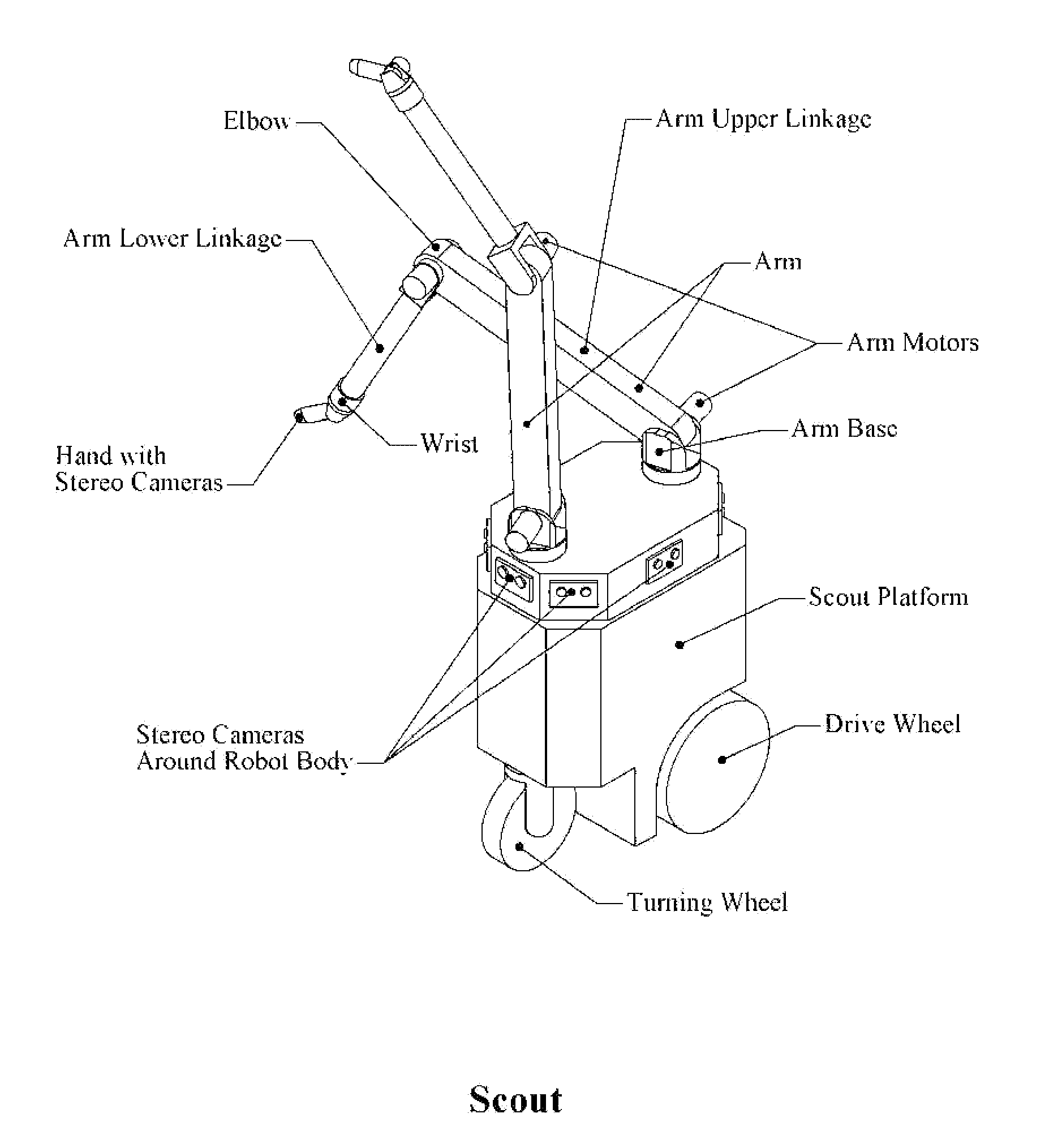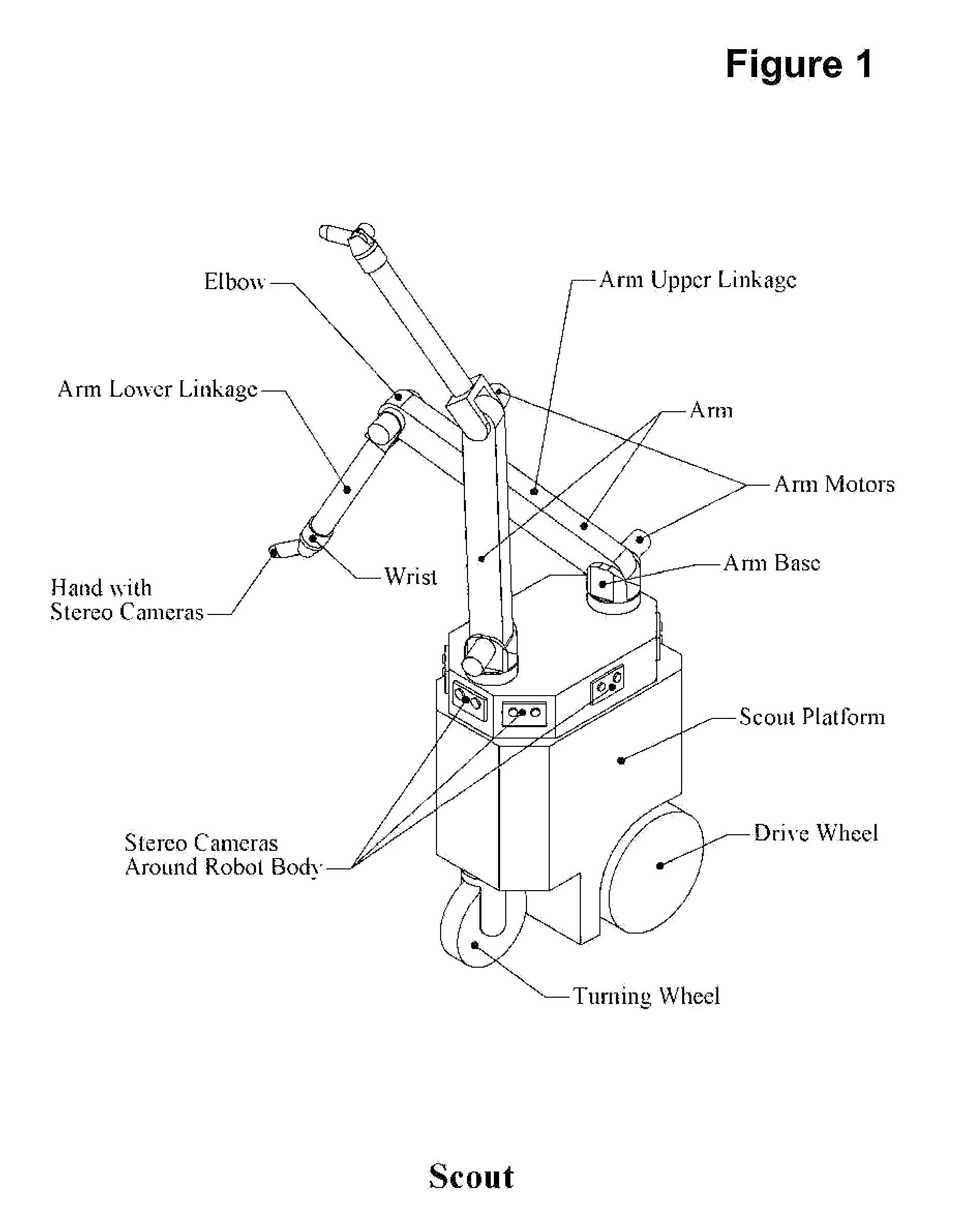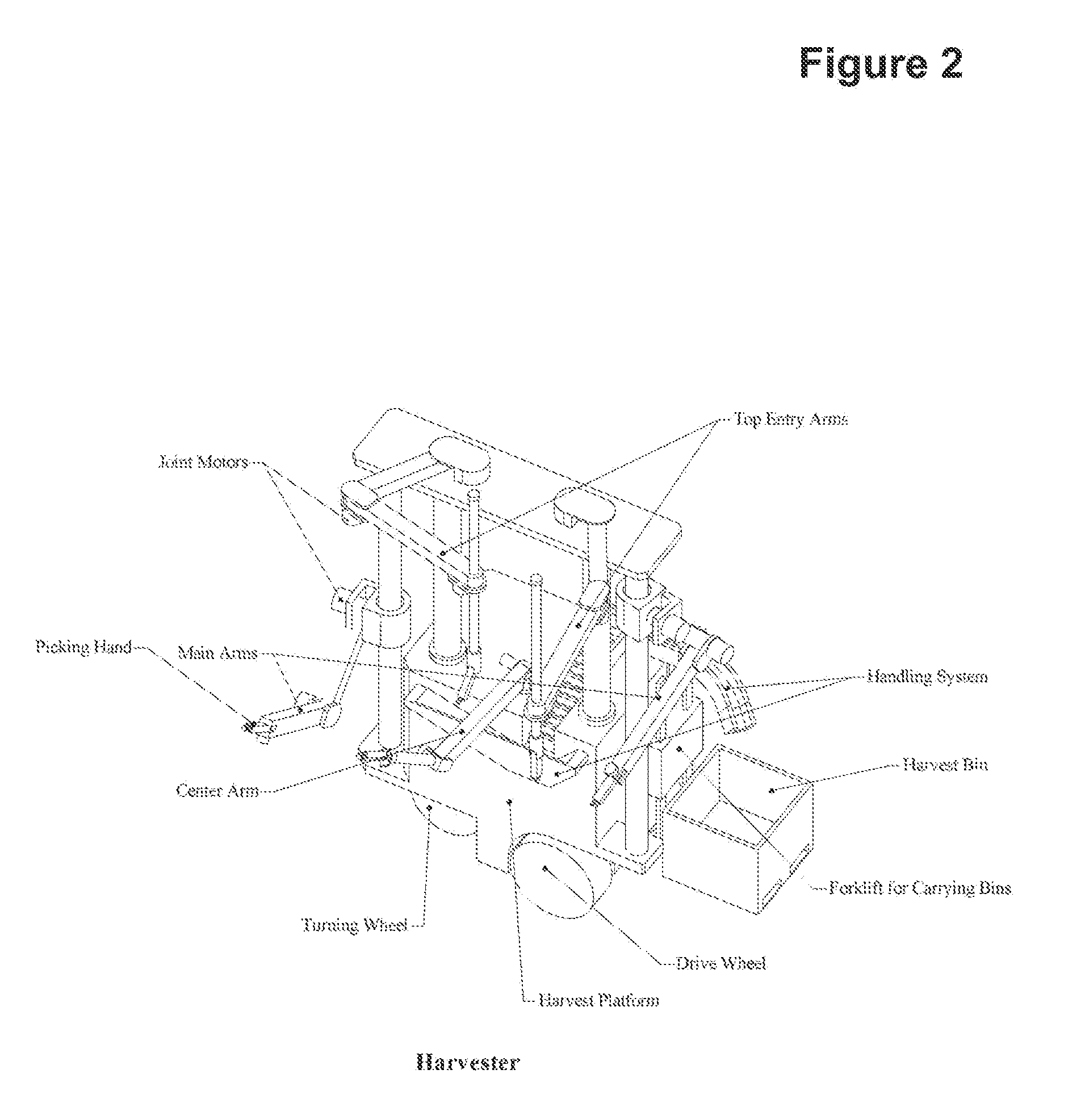Agricultural robot system and method
a robot and agri-industrial technology, applied in the field of robots, can solve the problems of high manual labor costs, low profit margins, and high labor costs of farmers, and achieve the effects of maximizing the efficiency and cost effectiveness of the system of deployed robots, reducing labor costs, and reducing labor costs
- Summary
- Abstract
- Description
- Claims
- Application Information
AI Technical Summary
Benefits of technology
Problems solved by technology
Method used
Image
Examples
Embodiment Construction
[0043]Embodiments of the invention enable an agricultural robot system and method of harvesting, pruning, thinning, spraying culling, weeding, measuring and managing of agricultural crops. One approach for automated harvesting of fresh fruits and vegetables, pruning of vines, culling fruit, weeding, measuring and managing of agricultural resources, etc. is to use a robot comprising a machine-vision system containing cameras such as rugged solid-state digital cameras. The cameras may be utilized to identify and locate the fruit on each tree, points on a vine to prune, weeds around plants. In addition, the cameras may be utilized in measuring agricultural parameters or otherwise aid in managing agricultural resources. The cameras may be coupled with a picking system or other implement to allow views all around and even inside the plant when performing the picking or desired agricultural function. Autonomous robot(s) or semi-autonomous robot(s) coupled with a tractor, trailer, boom or ...
PUM
 Login to View More
Login to View More Abstract
Description
Claims
Application Information
 Login to View More
Login to View More - R&D
- Intellectual Property
- Life Sciences
- Materials
- Tech Scout
- Unparalleled Data Quality
- Higher Quality Content
- 60% Fewer Hallucinations
Browse by: Latest US Patents, China's latest patents, Technical Efficacy Thesaurus, Application Domain, Technology Topic, Popular Technical Reports.
© 2025 PatSnap. All rights reserved.Legal|Privacy policy|Modern Slavery Act Transparency Statement|Sitemap|About US| Contact US: help@patsnap.com



